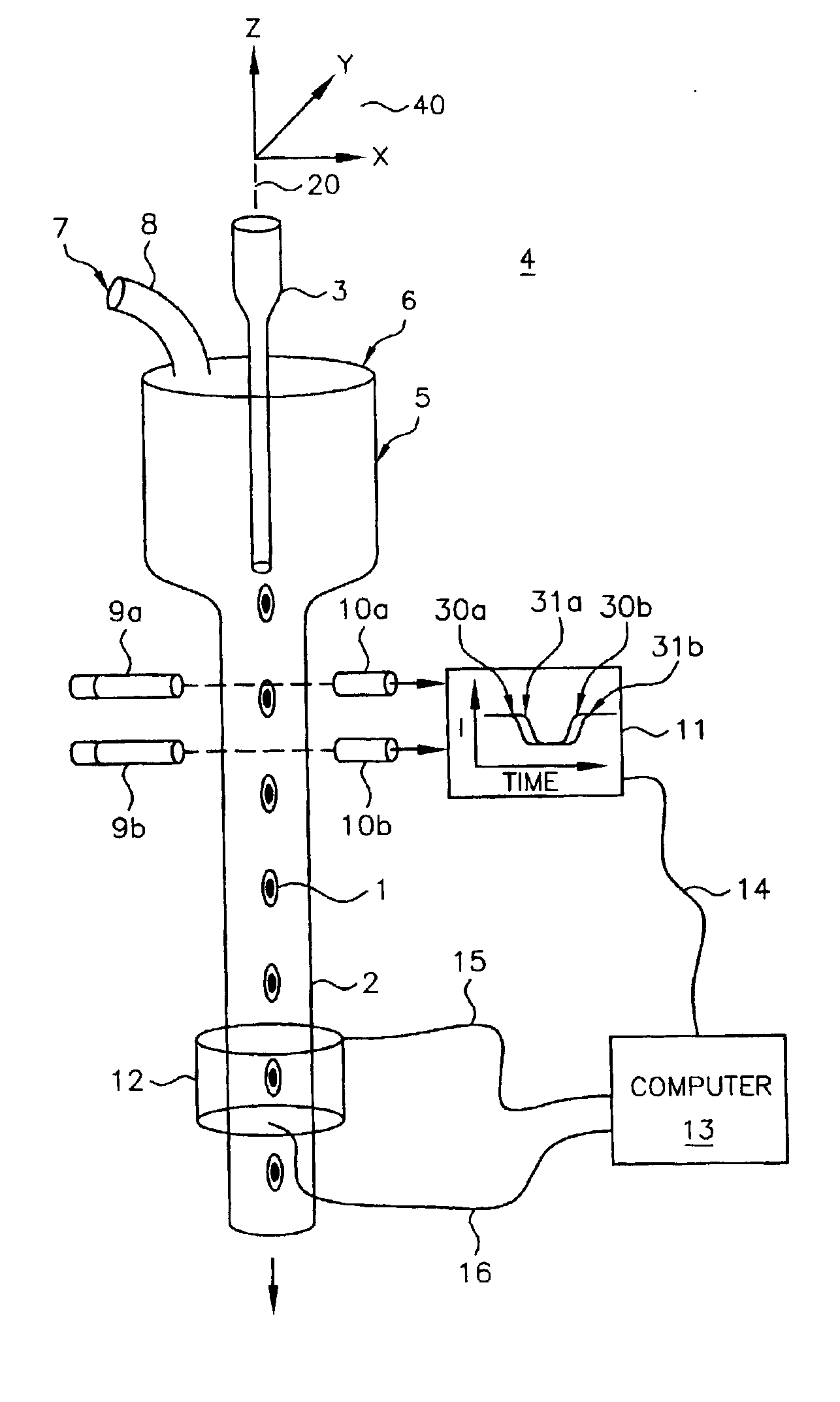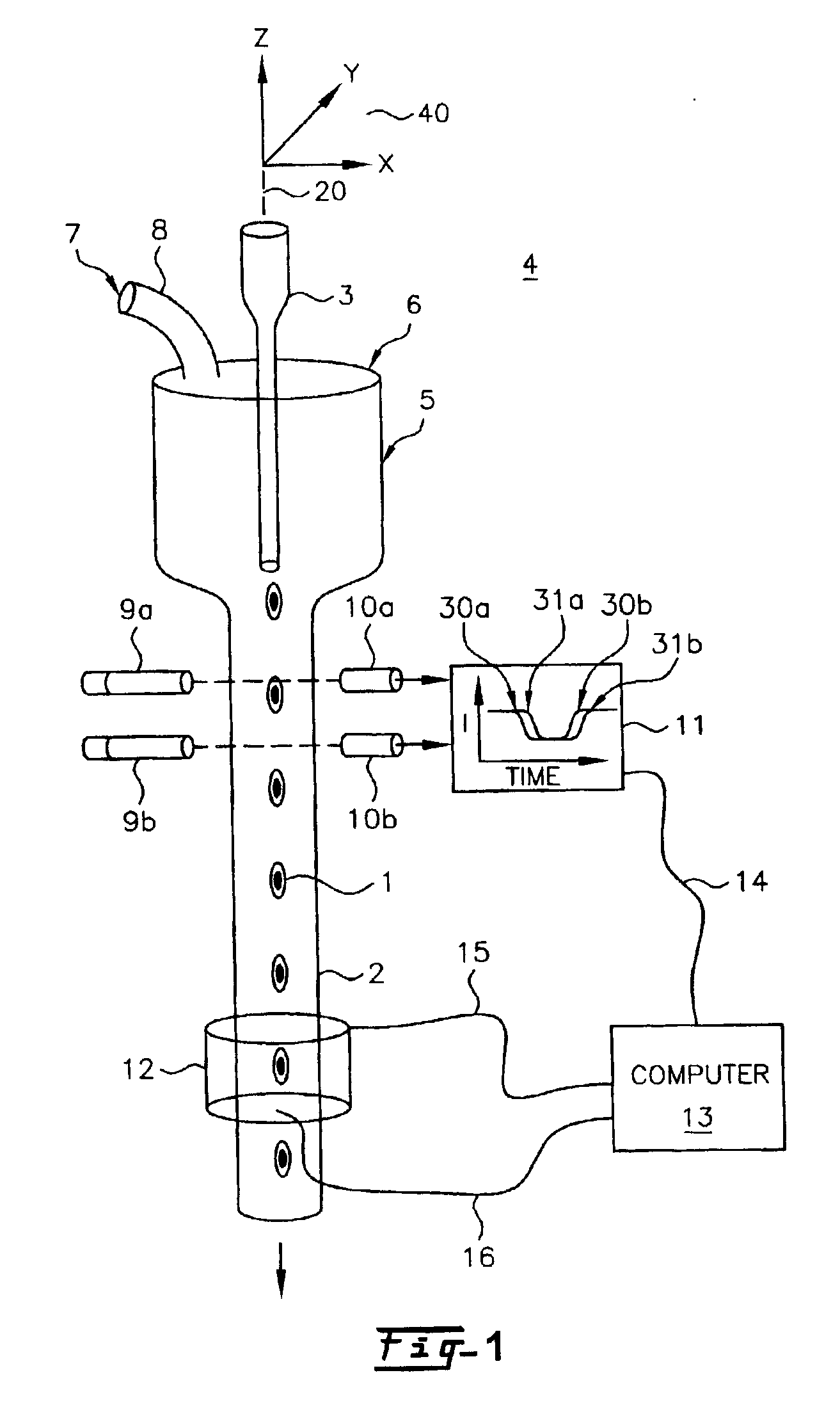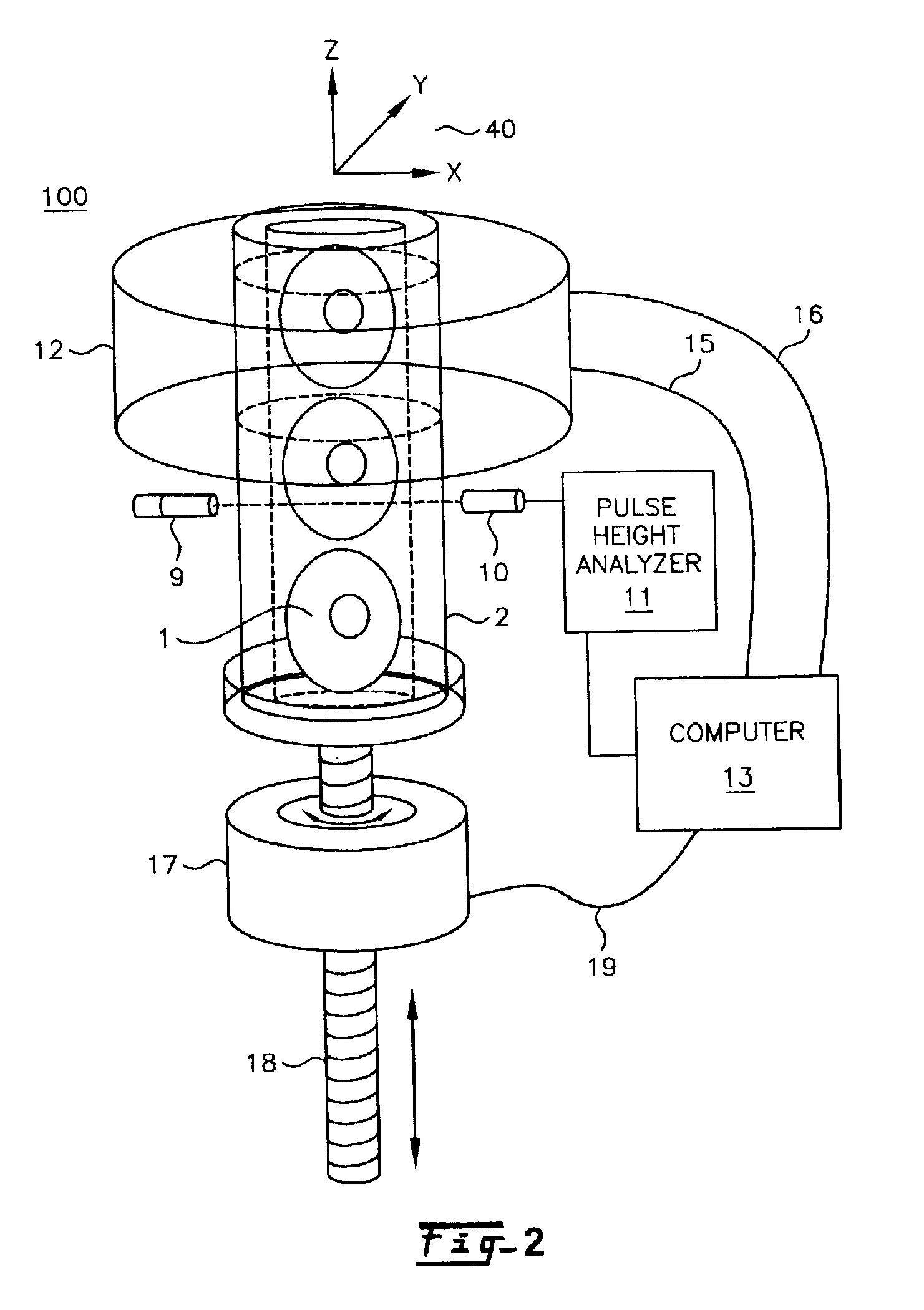Optical tomography of small objects using parallel ray illumination and post-specimen optical magnification
a technology of optical tomography and parallel beam, applied in the direction of material analysis using wave/particle radiation, fluorescence/phosphorescence, instruments, etc., can solve the problems of limited signal-to-noise ratio that can be achieved, high cost, and inability to use parallel beam x-ray sources in the portions of x-ray spectrum used in clinical and scientific imaging applications. achieve the signal-to-noise ratio significantly higher, easy and reproducible fabrication, and easy control
- Summary
- Abstract
- Description
- Claims
- Application Information
AI Technical Summary
Benefits of technology
Problems solved by technology
Method used
Image
Examples
Embodiment Construction
[0039]The invention is described herein with respect to specific examples relating to biological cells. It will be understood, however, that these examples are for the purpose of illustrating the principals of the invention, and that the invention is not so limited. In one example, constructing a three dimensional distribution of optical densities within a microscopic volume enables the quantification and the determination of the location of structures, molecules or molecular probes of interest. By using tagged molecular probes, the quantity of probes that attach to specific structures in the microscopic object may be measured. For illustrative purposes, an object such as a biological cell may be labeled with at least one stain or tagged molecular probe, and the measured amount and location of this probe may yield important information about the disease state of the cell, including, but not limited to, various cancers such as lung, breast, prostate, cervical and ovarian cancers.
[004...
PUM
| Property | Measurement | Unit |
|---|---|---|
| pixel size | aaaaa | aaaaa |
| pixel size | aaaaa | aaaaa |
| diameter | aaaaa | aaaaa |
Abstract
Description
Claims
Application Information
 Login to View More
Login to View More - R&D
- Intellectual Property
- Life Sciences
- Materials
- Tech Scout
- Unparalleled Data Quality
- Higher Quality Content
- 60% Fewer Hallucinations
Browse by: Latest US Patents, China's latest patents, Technical Efficacy Thesaurus, Application Domain, Technology Topic, Popular Technical Reports.
© 2025 PatSnap. All rights reserved.Legal|Privacy policy|Modern Slavery Act Transparency Statement|Sitemap|About US| Contact US: help@patsnap.com



